|
May
Important
historic dates in science
May
31:
James
Rainwater
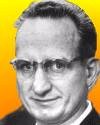 (Born
December 9, 1917: Died May 31, 1986) (Born
December 9, 1917: Died May 31, 1986)
Leo James Rainwater was an American physicist who won a share of the Nobel
Prize for Physics in 1975 for his part in determining the asymmetrical
shapes of certain atomic nuclei. During WW II, Rainwater worked on the
Manhattan Project to develop the atomic bomb. In 1949 he began formulating
a theory that not all atomic nuclei are spherical, as was then generally
believed. The theory was tested experimentally and confirmed by Danish
physicists Aage N. Bohr and Ben R. Mottelson. For their work the three
scientists were awarded jointly the 1975 Nobel Prize for Physics. He also
conducted valuable research on X rays and took part in Atomic Energy Commission
and naval research projects.
May
30:
Lewis
Morris Rutherford
(November 25, 1816: Died May 30, 1892)
American spectroscopist, astrophysicist and photographer, born in Morrisania,
NY, who made the first telescopes designed for celestial photography.
He produced a classification scheme of stars based on their spectra as
similarly developed by the Italian astronomer. Rutherfurd spent his life
working in his own observatory, built in 1856, where he photographed (from
1858) the Moon, Jupiter, Saturn, the Sun, and stars down to the fifth
magnitude. While using photography to map star clusters, he devised a
new micrometer to measure distances between stars with improved accuracy.
When Rutherford began (1862) spectroscopic studies, he devised highly
sophisticated diffraction gratings.
May
29:
Peter
Higgs
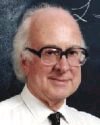 Born
May 29, 1929 Born
May 29, 1929
Peter Ware Higgs is an English theoretical physicist, the namesake of
the Higgs boson. In the late 1960s, Higgs and others proposed a mechanism
that would endow particles with mass, even though they appeared originally
in a theory - and possibly in the Universe! - with no mass at all. The
basic idea is that all particles acquire their mass through interactions
with an all-pervading field, called the Higgs field. which is carried
by the Higgs bosons. This mechanism is an important part of the Standard
Model of particles and forces, for it explains the masses of the carriers
of the weak force, responsible for beta-decay and for nuclear reactions
that fuel the Sun. No Higgs boson has yet been detected; its mass (over
1 TeV) exceeds the capacity of any current accelerator.
May
28:
Mars
landing
In 1971, the U.S.S.R. Mars 3 was launched. It arrived at Mars on December
2, 1971. The lander was released from the Mars 3 orbiter and became the
first spacecraft to land successfully on Mars. It failed after relaying
20 seconds of video data to the orbiter. The Mars 3 orbiter returned data
until Aug 1972, sending measurements of surface temperature and atmospheric
composition. The first USSR Mars probe was launched October 10, 1960,
but it failed to reach earth orbit. The next four USSR probes, including
Mars 1, also failed. The USA Mariner 3 Mars Flyby attempt in 1964 failed
when its solar panels did not open. USA's Mariners 4, 6, and 7 successfully
returned Mars photos. Also in 1971, the USSR Mars 2 lander crashed.
May
27:
Sir
John Douglas Cockcroft
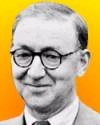 (Born
May 27, 1897: Died September 18, 1967) (Born
May 27, 1897: Died September 18, 1967)
British physicist, joint winner (with Ernest T.S. Walton of Ireland) of
the 1951 Nobel Prize for Physics for pioneering the use of particle accelerators
in studying the atomic nucleus. Together, in 1929, they devised an accelerator
that generated large numbers of particles at lower energies. The Cockcroft-Walton
generator they built was the first atom-smasher. In 1932, they used it
to disintegrate lithium atoms by bombarding them with protons - the first
artificial nuclear reaction not utilizing radioactive substances. This
type of accelerator proved to be one of the most useful in the world's
laboratories. They conducted further research on the splitting of other
atoms and established the importance of accelerators as a tool for nuclear
research.
May
26:
Atomic
Cannon
In 1953the 1st atomic cannon electronically fired, Frenchman Flat NV.
May
25:
Jack
Steinburger
(Born 25 May 1921)
German-born American physicist who, along with Leon M. Lederman and Melvin
Schwartz, was awarded the Nobel Prize for Physics in 1988 for their joint
discoveries of the neutrino beam method and the demonstration of the doublet
structure of the leptons through the discovery of the muon neutrino. In
1951, he met Lederman at Columbia University and, later, Schwarz who became
his student. In 1958, they conducted a neutrino experiment at the new
Brookhaven Alternating Gradient Synchrotron. The results emerged in a
classic 1962 paper, and neutrino beams went on to become one of the standard
tools of particle physics. When 26 years later, after receiving the Nobel,
Steinberger said, "to get that prize, do your work early!"
May
24:
Daniel
Gabriel Fahrenheit
(Born May 24, 1686:
Died September 16, 1736)
German physicist and maker of scientific instruments. He is best known
for inventing the alcohol thermometer (1709) and mercury thermometer (1714)
and for developing the Fahrenheit temperature scale. He devoted himself
to the study of physics and the manufacture of precision meteorological
instruments. He discovered, among other things, that water can remain
liquid below its freezing point and that the boiling point of liquids
varies with atmospheric pressure.
May
23:
William
Webster Hansen
(Born May 27, 1909:
Died May 23, 1949)
American physicist who contributed to the development of radar and is
regarded as the founder of microwave technology. He developed the klystron,
a vacuum tube essential to radar technology (1937). Based on amplitude
modulation of an electron beam, rather than on resonant circuits of coils
and condensers, it permits the generation of powerful and stable high-frequency
oscillations. It revolutionized high-energy physics and microwave research
and led to airborne radar. The klystron also has been used in satellite
communications, airplane and missile guidance systems, and telephone and
television transmission. After WW II, working with three graduate students,
Hansen demonstrated the first 4.5 MeV linear accelerator in 1947.
May
22:
Atomic
reactor patent
In 1960, 1st atomic
reactor system to be patented, JW Flora, Canoga Park CA.
May
21:
Andrey
Dmitriyevich Sakharov
(Born May 21, 1921: Died December 14, 1989)
Soviet nuclear physicist, an outspoken advocate of human rights in the
Soviet Union. At the end of World War II, Sakharov returned to pure science
and the study of cosmic rays. Two years later, he began work with a secret
research group on the development of the hydrogen bomb, and he is believed
to have been principally responsible for the Soviets' success in exploding
their first thermonuclear bomb (1954). With I.E. Tamm, he proposed controlled
thermonuclear fusion by confining an extremely hot ionized plasma in a
torus-shaped magnetic bottle, known as a tokamak device. He became politically
more active in the 1960s, campaigned against nuclear proliferation, and
from 1980 to 1986, he was banished and kept under police surveillance.
May
20:
Airplane
delivered H-bomb
In 1956, the first hydrogen fusion bomb (H-bomb) to be dropped from an
airplane exploded over Namu Atoll at the northwest edge of the Bikini
Atoll. The fireball was four miles in diameter. It was designated as "Cherokee,"
as part of "Operation Redwing."
May
19:
Nuclear
submarine
In 1959, the first submarine with two nuclear reactors was completed.
The Triton was 447 feet long, 37 feet wide and was manned by 148 officers
and crew. The General Electric Co. built the two water-cooled nuclear
reactors. Each propeller was powered by electrical current provided by
one of the reactors. The submarine had a cruising range of 110,000 miles.
The first U.S. atomic powered submarine had been completed a few years
before, on April 22, 1955.
May
18:
Kasimir
Fajans
(Born May 27, 1887: Died May 18, 1975)
Polish-American physical chemist who discovered the radioactive displacement
law simultaneously with Frederick Soddy of Great Britain. According to
this law, when a radioactive atom decays by emitting an alpha particle,
the atomic number of the resulting atom is two fewer than that of the
parent atom. When a beta particle is emitted, the atomic number is one
greater.
May
17:
Atomic
reactor
In 1955, an atomic reactor was patented by Fermi and Szilard (U.S. No.
2,708,656).
May
16:
Alfred
O.C. Nier
(born 28 May 1911) (Born May 28, 1911: Died May 16, 1994)
Physicist who helped develop the first atomic bomb.
May
15:
Pierre
Curie
(Born May 15, 1859: Died April 19, 1906)
 French
physical chemist and cowinner of the Nobel Prize for Physics in 1903.
His studies of radioactive substances were made together with his wife,
Marie Curie, whom he married in 1895. They were achieved under conditions
of much hardship - barely adequate laboratory facilities and under the
stress of having to do much teaching in order to earn their livelihood.
Together, they discovered radium and polonium in their investigation of
radioactivity by fractionation of pitchblende (announced in 1898). Later
they did much to elucidate the properties of radium and its transformation
products. Their work in this era formed the basis for much of the subsequent
research in nuclear physics and chemistry. French
physical chemist and cowinner of the Nobel Prize for Physics in 1903.
His studies of radioactive substances were made together with his wife,
Marie Curie, whom he married in 1895. They were achieved under conditions
of much hardship - barely adequate laboratory facilities and under the
stress of having to do much teaching in order to earn their livelihood.
Together, they discovered radium and polonium in their investigation of
radioactivity by fractionation of pitchblende (announced in 1898). Later
they did much to elucidate the properties of radium and its transformation
products. Their work in this era formed the basis for much of the subsequent
research in nuclear physics and chemistry.
May
14:
Nuclear
tests
In 1975 the US performs nuclear test at Nevada test site. In 1965 2nd
Chinese atom bomb explodes. In 1962 the US performs nuclear test at Christmas
Island.
May
13:
Stanislaw
M. Ulam
(Born April 13, 1909: Died May 13, 1984)
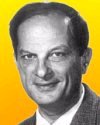 Polish-American
mathematician who played a major role in the development of the hydrogen
bomb at Los Alamos. He solved the problem of how to initiate fusion in
the hydrogen bomb by suggesting that compression was essential to explosion
and that shock waves from a fission bomb could produce the compression
needed. He further suggested that careful design could focus mechanical
shock waves in such a way that they would promote rapid burning of the
fusion fuel. Ulam, with J.C. Everett, also proposed the "Orion"
plan for nuclear propulsion of space vehicles. While Ulam was at Los Alamos,
he developed "Monte-Carlo method" which searched for solutions
to mathematical problems using a statistical sampling method with random
numbers. Polish-American
mathematician who played a major role in the development of the hydrogen
bomb at Los Alamos. He solved the problem of how to initiate fusion in
the hydrogen bomb by suggesting that compression was essential to explosion
and that shock waves from a fission bomb could produce the compression
needed. He further suggested that careful design could focus mechanical
shock waves in such a way that they would promote rapid burning of the
fusion fuel. Ulam, with J.C. Everett, also proposed the "Orion"
plan for nuclear propulsion of space vehicles. While Ulam was at Los Alamos,
he developed "Monte-Carlo method" which searched for solutions
to mathematical problems using a statistical sampling method with random
numbers.
May
12:
Sir
Christopher Hinton
(Born May 12, 1901: Died June 22, 1983)
English engineer who was a leading figure in the development of the nuclear
energy industry in Britain; he supervised the construction of Calder Hall,
the world's first large-scale nuclear power station (opened in 1956).
He first worked for Imperial Chemical Industries (ICI) where at age 29
he was appointed chief engineer of the Alkali Groups. While at ICI he
was selected to start building nuclear power plants. Britain's first four
such plants were completed in six years. He played a founding role in
fast breeder technology. The decision to build the Dounreay Fast Reactor
was made in 1954, which ran successfully for over two decades, until its
planned shutdown in 1977, thus demonstrating the safe operation of the
concept.
May
11:
Richard
P. Feynman
 (Born
May 11. 1918: Died February 15, 1988) (Born
May 11. 1918: Died February 15, 1988)
Richard P(hillips) Feynman was an American theoretical physicist who was
probably the most brilliant, influential, and iconoclastic figure in his
field in the post-WW II era. By age 15, he had mastered calculus. He took
every physics course at MIT. His lifelong interested was in subatomic
physics. In 1942, he went to Los Alamos where Hans Bethe made the 24 year
old Feynman a group leader in the theoretical division, to work on estimating
how much uranium would be needed to achieve critical mass for the Manhattan
(atomic bomb) Project. After the war, he developed Feynman Diagrams, a
simple notation to describe the complex behavior of subatomic particles.
In 1965, he shared the Nobel Prize in Physics for work in quantum electrodynamics.
May
10:
Caesium
In 1860, the discovery
of the element caesium was announced by German chemists, Robert Bunsen
and Gustav Robert Kirchoff to the Berlin Academy of Scientists. It was
first noticed by its characteristic blue spectral lines, for which colour
is was named.
May
9:
Moon
reached by laser light
In 1962, a laser beam was bounced off the moon from earth by MIT scientists.
The area of the light beam on the surface was estimated at a diameter
of 4 miles.
May
8:
Antoine-Laurent
Lavoisier
(Born August 26, 1743: Died May 8, 1794)
French scientist, the "father of modern chemistry," was a brilliant
experimenter also active in public affairs. An aristocrat, he invested
in a private company hired by the government to collect taxes. With his
wealth he built a large laboratory. In 1778, he found that air consists
of a mixture of two gases which he called oxygen and nitrogen. By studying
the role of oxygen in combustion, he replaced the phlogiston theory. Lavoisier
also discovered the law of conservation of mass and devised the modern
method of naming compounds, which replaced the older nonsystematic method.
During the French Revolution, for his involvement with tax-collecting,
he was guillotined.
May
7:
Allan MacLeod Cormack
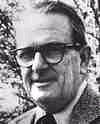 (Born
February 23, 1924: Died May 7, 1998) (Born
February 23, 1924: Died May 7, 1998)
South African-born American physicist who formulated the mathematical
algorithms that made possible the development of a powerful new diagnostic
technique, the cross-sectional X-ray imaging process known as computerized
axial tomography (CAT) scanning. He first described this in two papers
in 1963 and 1964. X-ray tomography is a process by which a picture of
an imaginary slice through an object (or the human body) is built up from
information from detectors rotating around the body.
May
6:
Polaris
 In
1962, the first U.S. nuclear warhead fired from a Polaris submarine was
launched. The submerged USS Ethan Allen (SSBN-608) test-fired a Polaris
A-2 missile with a live nuclear warhead across the Pacific Ocean toward
Christmas Island, 1,700 miles (2,700 km) away. The test, code-named Frigate
Bird, was the only one the U.S. ever conducted of any nuclear ballistic
missile from launch through detonation. After a 12.5-minute, 1,200-mile
(1,900 km) flight, the warhead exploded in the air between 10,000 and
15,000-ft (3,000 and 4,600-m) high with a yield of 600 kilotons. Thirty
miles from the air burst at periscope depth, the waiting USS Carbonaro
(SS-337) captured the mushroom cloud on film. In
1962, the first U.S. nuclear warhead fired from a Polaris submarine was
launched. The submerged USS Ethan Allen (SSBN-608) test-fired a Polaris
A-2 missile with a live nuclear warhead across the Pacific Ocean toward
Christmas Island, 1,700 miles (2,700 km) away. The test, code-named Frigate
Bird, was the only one the U.S. ever conducted of any nuclear ballistic
missile from launch through detonation. After a 12.5-minute, 1,200-mile
(1,900 km) flight, the warhead exploded in the air between 10,000 and
15,000-ft (3,000 and 4,600-m) high with a yield of 600 kilotons. Thirty
miles from the air burst at periscope depth, the waiting USS Carbonaro
(SS-337) captured the mushroom cloud on film.
May
5:
Dr. Joseph William Kennedy
 (Born
May 30, 1916: Died May 5, 1957) (Born
May 30, 1916: Died May 5, 1957)
American scientist, one of four co-discoverers of plutonium, (element
94) which was produced from uranium oxide bombarded with deuterons in
a cyclotron at the Univ. of California at Berkeley. Subsequently, on March
28, 1941, Glenn Seaborg, Emilio Segrè and Joseph Kennedy demonstrated
that plutonium, like U235, is fissionable with slow neutrons, thus neutrons
of any speed, which implies it's a potential fission bomb material. He
was a chemistry instructor while working on the research project led by
Glenn Seaborg at the University of California, Berkeley. After working
with Seaborg, Kennedy was chosen by J. Robert Oppenheimer to lead the
Chemistry Division of the Manhattan Project. Image: plutonium hydroxide,
20 microgram in a capillary tube, 1942.
May
4:
Chinese nuclear test
1983-China People's
Republic performs nuclear test at Lop Nor People's Republic of China
May
3:
Steven Weinberg
(Born May 3, 1933)
American nuclear physicist who in 1979 shared the Nobel Prize for Physics
with Sheldon Lee Glashow and Abdus Salam for work in formulating the electroweak
theory, which explains the unity of electromagnetism with the weak nuclear
force.
May
2:
Leonardo da Vini
(Born 1452: Died May
2, 1519)
Italian painter, draftsman, sculptor, architect, and engineer whose genius,
perhaps more than that of any figure, epitomized the Renaissance humanist
ideal. His notebooks reveal a spirit of scientific inquiry and a mechanical
inventiveness that were centuries ahead of their time.
May
1:
Van Allen radiation belts
In 1958, the discovery of the powerful Van Allen
radiation belts that surround Earth was published in the Washington Evening
Star. The article covered the report made by their discoverer James. A.
Van Allen to the joint sysmposium of the National Academy of Sciences
and the American Physical Society in Washington DC. He used data from
the Explorer I and Pioneer III space probes of the earth's magnetosphere
region to reveal the existence of the radiation belts - concentrations
of electrically charged particles. Van Allen (born Sept. 7 1914) was also
featured on the cover of the May 4, 1959 Time magazine for this discovery.
He was the principal investigator on 23 other space probes.
Click
here for previous months
April
March
February
January
Photos
courtsey of Today in Science
|

